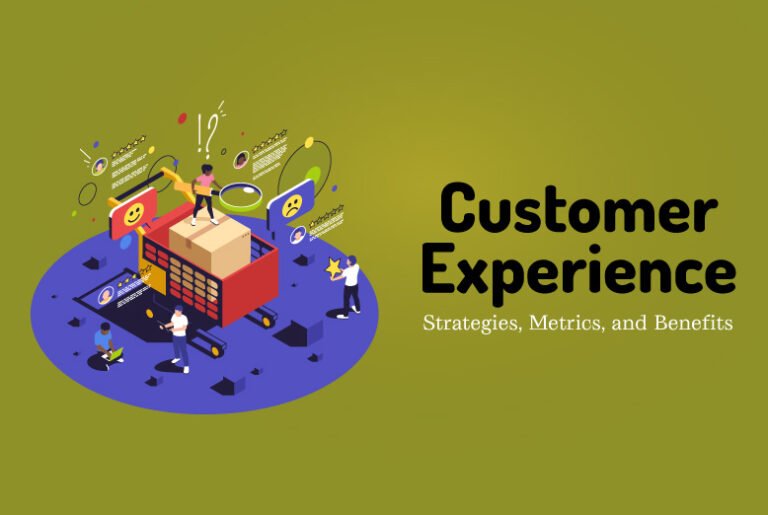Customer experience encompasses customers’ overall impression of your brand across every interaction during their journey. It influences key metrics like revenue and loyalty. While customer service addresses specific problems at individual touchpoints, customer experience spans the entire journey, shaping perceptions of your brand. A positive experience fosters loyalty and advocacy, vital in today’s customer-centric landscape where buyers have abundant options and resources. Measuring customer experience helps identify strengths and areas for enhancement.
Benefits of Creating a Positive Customer Experience
Cultivating a positive customer experience is advantageous for both your business and your clientele. It nurtures loyalty and confidence, yielding tangible benefits for your enterprise. Here are four key advantages:
- Enhanced retention: Positive experiences encourage repeat business.
- Augmented loyalty: Satisfied customers become enthusiastic advocates.
- Increased sales: Word-of-mouth endorsements lead to heightened interest.
- Elevated lifetime value: Sustained satisfaction fosters long-term relationships.
Measuring Customer Experience
Measuring CX involves using surveys, journey maps, and metrics, which can take years for some customers. Customer satisfaction isn’t just about good service; it’s also about positive responses to advertising, ease of product use, and timely responses from your team.
Surveys are just one tool for gauging CX. They can be sent after a purchase, support interaction, or to gather feedback on new products. Customer feedback from surveys reveals strengths and areas for improvement.
Customer journey maps track interactions, revealing reasons for failed sales or product preferences. For example, mapping a customer’s journey from discovering your brand to browsing your website can uncover friction points, providing valuable insights.
Let’s explore eight key metrics
1. Customer Satisfaction Score (CSAT)
CSAT is a direct assessment method for evaluating customer experience, often used post-interactions. It involves averaging scores from immediate surveys to measure satisfaction levels, helping businesses identify areas for improvement.
2. Customer Lifetime Value (CLV)
CLV represents a customer’s long-term value to a business, aiding in resource allocation and tailored marketing strategies for customer retention and profitability.
3. Net Promoter Score (NPS)
NPS measures brand recommendation likelihood, providing loyalty and advocacy insights, revealing customer sentiment, and identifying growth promoters.
4. Customer Effort Score (CES)
CES surveys rate interactions as easy, neutral, or difficult, emphasizing the importance of ease in customer experiences, a key factor assessed by customer experience management tools.
Businesses can pinpoint pain points by measuring effort levels and enhance overall satisfaction and loyalty.
5. Customer Churn Rate
The Customer Churn Rate denotes the proportion of customers who cease their subscriptions or patronage, furnishing valuable insights into loyalty dynamics and retention endeavors aimed at mitigating revenue attrition.
6. Customer Retention Rate
Retention Rate measures the percentage of retained customers over time, reflecting loyalty and satisfaction levels, crucial for sustainable growth.
7. Customer Journey Analytics
Analyzing customer journeys provides insights into motivations and preferences, enabling businesses to personalize experiences and optimize touchpoints for better conversion and satisfaction.
8. Customer Support Ticket Trends
By scrutinizing trends in customer support tickets, businesses can swiftly pinpoint recurring issues, enabling proactive resolution and bolstering efficiency in customer service management to elevate overall satisfaction levels.
Strategies for Creating a Positive Customer Experience
11 key strategies for creating a positive customer experience include:
1. Listen to Customers: Gather feedback to enhance products/services, identify issues early, and stay ahead of trends.
2. Personalize Interactions: Use analytical tools to foster loyalty and boost revenue.
3. Be Responsive: Address inquiries promptly and offer multiple contact options for swift resolutions.
4. Be Transparent: Maintain honesty about products/services, pricing, and data usage, fostering trust.
5. Show Empathy: Understand and address customer needs, integrating empathy into product/service design.
6. Offer Excellent Service: Go above and beyond to leave a meaningful impression, even with small gestures.
7. Harness Technology: Employ CRM software and tailored content to elevate the customer experience.
8. Strive for Continuous Enhancement: Employ both requested and spontaneous feedback to swiftly identify and address issues.
9. Acknowledge Loyalty: Acknowledge and incentivize loyal customers to boost satisfaction and loyalty.
10. Cultivate a Community: Cultivate a sense of community among customers by leveraging shared experiences.
11. Be Consistent: Maintain consistency in interactions, building trust and loyalty over time.
Final Thoughts
Prioritizing customer experience (CX) is essential in today’s business landscape, where consumer perceptions heavily influence brand success. Understanding that CX extends beyond individual interactions to encompass the entire customer journey is fundamental. Creating a positive CX yields benefits like enhanced customer retention rates and increased sales through word-of-mouth endorsements.
Also Read: How AI Is Improving Customer Experience In The Finance Industry?



